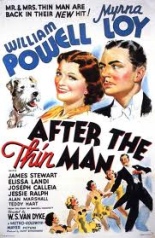
 The sequel to 1934’s The Thin Man features the return of William Powell’s hard-quipping and even harder-drinking detective Nick Charles and his hot, extremely understanding wife, Nora (Myrna Loy). Like in the first movie, Nick spends the entirety of After the Thin Man smashed while still running investigative circles around the police. To be fair, the story does take place at New Year.
The sequel to 1934’s The Thin Man features the return of William Powell’s hard-quipping and even harder-drinking detective Nick Charles and his hot, extremely understanding wife, Nora (Myrna Loy). Like in the first movie, Nick spends the entirety of After the Thin Man smashed while still running investigative circles around the police. To be fair, the story does take place at New Year.
This time, the murder is a family affair when one of Nora’s cousins is accused of murdering her no-good, philandering bum of a husband. The death doesn’t occur until about halfway through the movie, however. The first half is all about re-establishing Nick and Nora’s relationship as they move back to San Francisco after their New York adventure in the first movie. Not that that’s at all dull.
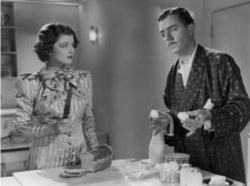 No matter how good your own relationship is, Powell and Loy will still make you jealous of theirs. That’s even more remarkable once the movie reveals just how far their individual sides of the tracks are from each other. The Thin Man hinted at it by showing Nick’s getting reacquainted with old crooks he’d put away, but it really comes into focus in the sequel. As Nick and Nora ride home from the train station, she greets people with big hats and monocles; Nick says “hello” to a pickpocket and the guy who delivers his booze.
No matter how good your own relationship is, Powell and Loy will still make you jealous of theirs. That’s even more remarkable once the movie reveals just how far their individual sides of the tracks are from each other. The Thin Man hinted at it by showing Nick’s getting reacquainted with old crooks he’d put away, but it really comes into focus in the sequel. As Nick and Nora ride home from the train station, she greets people with big hats and monocles; Nick says “hello” to a pickpocket and the guy who delivers his booze.
That makes it all the more fun when their two worlds collide, and Nora’s stuffy aunt has to ask “Nicholas” (as she insists on calling him) to quietly help the family out. Hilarity ensues (especially in a scene where Nick carries a conversation all by himself in a smoking room full of snoring, old codgers), but like The Thin Man, there’s also a great mystery with plenty of diverse suspects, one of whom is a very young Jimmy Stewart as the Nice Guy in love with Nora’s newly widowed cousin. —Michael May

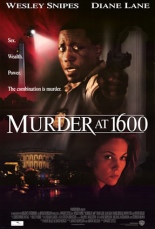
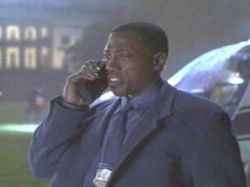 What exactly is the president’s administration covering up? And for whom? You’ll find out toward the end of a slightly bloated running time. Dennis Miller co-stars as Snipes’ co-worker, and while he may have been a great comedian once upon a time, he’s grating as a dramatic actor, so it’s hard not to applaud when he takes a bullet. —Rod Lott
What exactly is the president’s administration covering up? And for whom? You’ll find out toward the end of a slightly bloated running time. Dennis Miller co-stars as Snipes’ co-worker, and while he may have been a great comedian once upon a time, he’s grating as a dramatic actor, so it’s hard not to applaud when he takes a bullet. —Rod Lott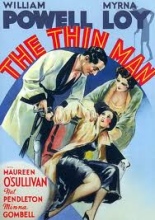
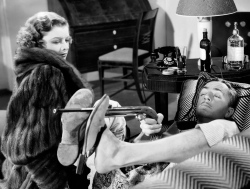 Nick finally gives in, but he’ll be damned if he’s going to sober up to solve this thing. There are lots of suspects and plenty of motives to sort through, but Nick negotiates them all with intelligence and charm without even having to set down his cocktail. He slurs and grins his way through the case all the way to the requisite, gather-all-the-suspects dinner party at the end. Nora mostly looks on with curiosity while making good-natured faces at her husband in this one, but she gets more to do in the five sequels that followed. —Michael May
Nick finally gives in, but he’ll be damned if he’s going to sober up to solve this thing. There are lots of suspects and plenty of motives to sort through, but Nick negotiates them all with intelligence and charm without even having to set down his cocktail. He slurs and grins his way through the case all the way to the requisite, gather-all-the-suspects dinner party at the end. Nora mostly looks on with curiosity while making good-natured faces at her husband in this one, but she gets more to do in the five sequels that followed. —Michael May
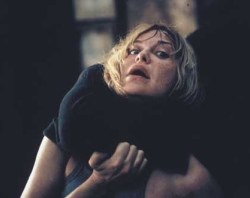 After wising up, the cops recruit a young poker expert (Silvio Muccino) to spar in future matches, which comes in handy when the chief’s daughter is one of the unsuspecting victims. Horror elements aside,
After wising up, the cops recruit a young poker expert (Silvio Muccino) to spar in future matches, which comes in handy when the chief’s daughter is one of the unsuspecting victims. Horror elements aside, 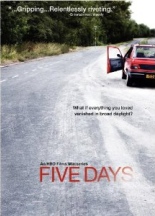
 Hot-tempered husband/father Matt (David Oyelowo) is torn up at the prospect of losing his entire immediate family, while also considered a possible suspect by the authorities leading the investigation (Hugh Bonneville and Janet McTeer). Their widening net weaves in encounters with journalists, a potential pedophile, a nursing home resident (Edward Woodward) and one horny young woman (Sarah Smart) with a secret.
Hot-tempered husband/father Matt (David Oyelowo) is torn up at the prospect of losing his entire immediate family, while also considered a possible suspect by the authorities leading the investigation (Hugh Bonneville and Janet McTeer). Their widening net weaves in encounters with journalists, a potential pedophile, a nursing home resident (Edward Woodward) and one horny young woman (Sarah Smart) with a secret.